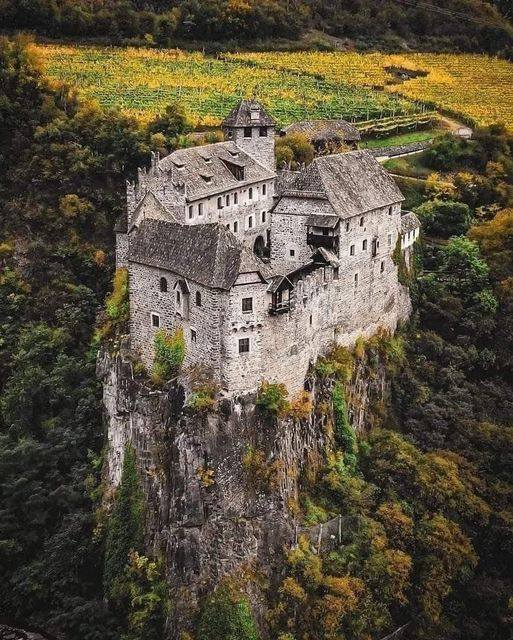

Castle Runkelstein, also known as Castel Roncolo in Italian, is a medieval castle located in South Tyrol, Italy. It is indeed a historic fortress that dates back to the 13th century. The exact construction date is not precisely known, but it is believed to have been built in the early 13th century, likely between 1237 and 1250.
The castle is known for its well-preserved medieval architecture and its stunning location overlooking the city of Bolzano (Bozen) in the region of South Tyrol. It has played a significant role in the history of the region and has served various purposes over the centuries, including as a residence and a fortress. Today, Castle Runkelstein is a popular tourist attraction and is famous for its impressive frescoes and medieval artwork that can be found inside.
Certainly, here’s more information about Castle Runkelstein (Castel Roncolo):
- Architecture: Castle Runkelstein is a classic example of a medieval fortress. It features sturdy stone walls, towers, and battlements that reflect the architectural style of the time. The castle is surrounded by a defensive wall and a moat, which adds to its historical charm.
- Artwork: What sets Castle Runkelstein apart is the extensive collection of frescoes that adorn its interior. The castle is known for its frescoes that depict scenes from medieval life, chivalry, hunting, and various other aspects of the time. These frescoes provide valuable insights into the culture and customs of the medieval period.
- Ownership: Over the centuries, Castle Runkelstein changed hands multiple times and was owned by various noble families. It has had a rich history, including being a residence for local lords and, at times, serving as a hunting lodge.
- Restoration: The castle underwent significant restoration work in the 19th and 20th centuries to preserve its historical significance and prevent it from falling into disrepair. These restoration efforts have helped maintain the castle’s authenticity and make it accessible to visitors today.
- Visitor Attraction: Castle Runkelstein is open to the public and has become a popular tourist destination in the South Tyrol region. Visitors can explore the castle’s various rooms, admire the frescoes, and take in the beautiful views of the surrounding landscape.
- Events and Exhibitions: The castle often hosts cultural events, exhibitions, and performances that provide additional opportunities for visitors to engage with the history and heritage of the region.
Overall, Castle Runkelstein is a fascinating historical site that offers a glimpse into the medieval period in South Tyrol. Its well-preserved architecture and remarkable frescoes make it a must-visit for history enthusiasts and tourists interested in the cultural heritage of the region.
